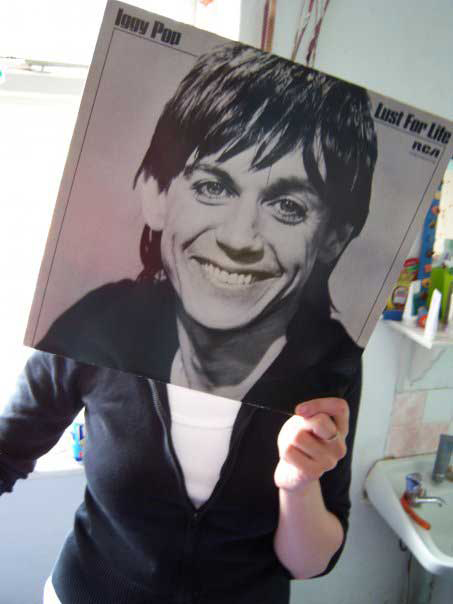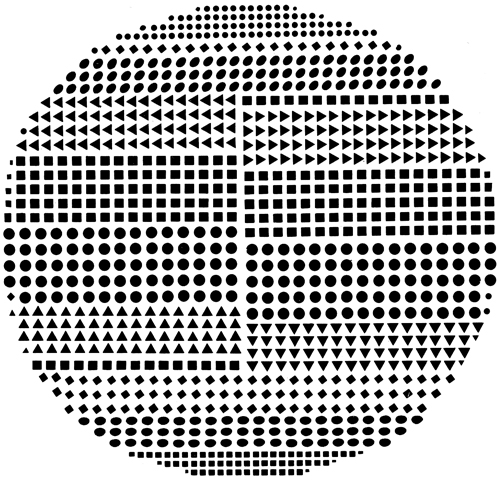a world of bioluminescence
I read a book on bioluminescence a few years ago (it’s in the archives, somewhere) and I remember that the author felt that the original researchers in the area, biology I assume, were thought by many of their colleagues to be a little bit ‘silly’ and not as ‘serious’ as other researchers, the importance of color once again casually dismissed by the ‘rational’ mind.
But when bioluminescent creatures of green, blue and eventually red were discovered by independent researchers around the world, above and below sea level, there was great excitement. Red, green and blue are, of course, the additive primaries of light, the colors that are projected from your computer screen and combined by your eyes and mind to form the illusion of a full range of colors.
Forget HD DVD and yer Blu-ray, after watching this presentation and considering the gene-splicers who must be working on this, I can’t help but think . . . I want bioluminescent streaming color video pets!
Sleeve Heads
 Vinyl Sleeve Heads, from Yadogg.
Vinyl Sleeve Heads, from Yadogg.
the multipliable work ad lib
“Black and white—dot and stroke—to print, to transpose, to transmit, to distribute in images, by the press, by the technique of projections. It is the multipliable work ad lib, which can be recreated at a distance by another.”
—Victor Vasarely, 1957; quoted in Vasarely, by Marcel Joray, 1976.
Carried by the waves
“Carried by the waves, I flee forward, now toward the atom, now toward the galaxies.”
—Victor Vasarely; quoted in Vasarely, by Marcel Joray, 1976.
Plastic constituents of particle character, 1958

the letter ‘K’
“Although at the time of his death Kafka was unknown outside of Prague,
over the years his works and fame have spread far and wide. His
influence on modern literature is so pervasive that it is nearly
impossible to trace – Kafka has become part of the very texture of
modern writing, and he practically owns the letter ‘K.’”
—Jeff Nowak & Allen B. Ruch, from The most fortunate and unfortunate of men, an online biography of Franz Kafka, 2004.
K
“I find the letter K offensive, almost nauseating.”
—Franz Kafka, in his diary; quoted by David Sacks in Letter Perfect, 2003.
M
“The emblem of the Hell’s Angels, termed ‘colors,’ consists of an embroidered patch of a winged skull wearing a motorcycle helmet. Just below the wings of the emblem are the letters ‘MC.’ Over this is a band bearing the words ‘Hell’s Angels.’. . .
Another patch worn by some members bears the number ‘13.’ It is reported to represent the thirteenth letter of the alphabet, ‘M,’ which in turn stands for marijuana and indicates the wearer thereof is a user of the drug.”
—Hunter S. Thompson, Hell’s Angels, 1967.
Vowels for Wales
“My wife and I were driving around England once, and we came to a section called ‘Wales,’ which is this linguistically deformed area that apparently is too poor to afford vowels. All the road signs look like this:
It is a tragic sight indeed to see Welsh parents attempting to sing traditional songs such as ‘Old MacDonald Had a Farm’ to their children and lapsing into heart-rending silence when they get to the part about ‘E-I-E-I-O.’ If any of you in our reading audience have extra vowels that you no longer need, because for example your children have grown up, I urge you to send them (your children) to: Vowels for Wales, c/o Lord Chesterfield, Parliament Luckystrike, the Duke of Earl, Pondwater-on-Gabardine, England.”
—Dave Barry, Europe on Five Vowels a Day, from Dave Barry’s Greatest HIts, 1988.
famous letters and numbers
“Although it was constructed in 1536, the New York subway system boasts an annual maintenance budget of nearly $8, currently stolen, and it does a remarkable job of getting New Yorkers from point A to an indeterminate location somewhere in the tunnel leading to point B. It’s also very easy for the ‘out-of-towner’ to use, thanks to the logical, easy-to-understand system of naming trains after famous letters and numbers. For directions, all you have to do is peer up through the steaming gloom at the informative signs, which look like this:
EXPRESS LOCAL ONLY LL 67 ♦
DDD 4♠ 1K ✩ AAAA 9 ONLY
EXCEPT CERTAIN DAYS BB ®® 3
MIDWAY THROUGH TOWN 1 7 D
WALK REAL FAST AAAAAAAAA 56
‘YY’ ♣ 1,539
AAAAAAAAAAAAAAAAAA”
—Dave Barry, Can New York Save Itself?, from Dave Barry’s Greatest HIts, 1988.